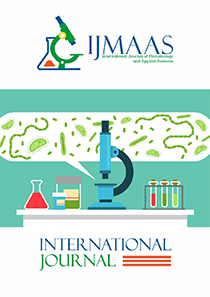Antifungal Activity of Different Extracts of Andrographis paniculata on Fungi Isolated from Barbing Salon Equipment
Vol. 4, Issue 1, 2025
KEYWORDS
Barbing Salon Equipment, Andrographis paniculata, Antifungal Activity, Plant Extract, Inhibition, Mycoses.
Abstract
ABSTRACT
Most barbing equipment are contaminated by fungi due to unproven methods of cleaning and sterilization. This research was carried out to investigate the antifungal potential of Andrographis paniculata (king of bitters) on fungi isolated from salon equipment in Rivers State, Nigeria. A total of one hundred and eighty (180) swab samples from clipper, brush and combs were collected from Bori, Omoku and Port Harcourt Cities. Samples were cultured using dermatophyte test medium and sabouraud dextrose agar. Fungal isolates were identified using standard mycological techniques. Forty-four (44) fungi belonging to six genera isolated were Aspergillus flavus, Aspergillus terrus, Fusarium solani, Mucor indicus, Rhizopus nigricans, Trichophyton rubrum and Penicillium italicum. Fungi were subjected to ethanol, methanol and crude (aqueous) extract of A. paniculata. Results showed that the highest level of inhibitions for ethanol extract of A. paniculata in Bori were Aspergillus terrus (100%) and Trichophyton rubrum (100%), in Omoku, Fusarium solani (100%), Aspergillus terrus (100%) and Trichophyton rubrum (100%). In Port Harcourt, Penicillium italicum (100%), Aspergillus flavus (100%), Fusarium solani (100%), Rhizopus nigricans (100%) and Trichophyton rubrum (100%). For methanol extracts all fungal isolates from Bori were inhibited. All isolates of Omoku except Penicillium italicum (33.3%) and Rhizopus nigricans (33.3%) were inhibited. All isolates of Port Harcourt were inhibited except Aspergillus terrus (33.3%). Crude extracts showed minimal inhibitory activity with the highest being Penicillium italicum (33.3%) for Bori, Penicillium italicum (33.3%) and Rhizopus nigricans (33.3%) for Omoku and Fusarium solani (33.3%) for Port Harcourt. The activities of Andrographis paniculata extracts on the fungal isolates were concentration dependent especially as high concentrations of the extracts proved more potent than lower concentrations. The extracts have the potential to be used in treating mycoses that might arise as a result of using barbing equipment contaminated with pathogenic fungi.
Current: Vol 4, Issue 2, 2025

Call for papers
The International Journal of Microbiology and Applied Sciences warmly welcome your valuable articles for publication.
